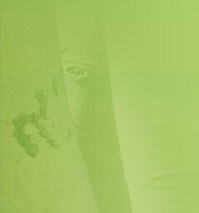 ^^^
^^^
Mgr. Julie Olejníčková, PhD.
Hodnost
Ph.D. (2002, Jihočeská univerzita, Biologická fakulta, České Budějovice)
Pozice

Zámek 136, CZ-37333 Nové Hrady
Tel.: +420 386361231
Fax: +420 386361231
olejnickova@nh.usbe.cas.cz
Současné zaměření
I am interested in plants stress physiology. Primarily, I focus on the use various optical reporter signals (chlorophyll fluorescence emission, reflectance indexes, etc.) to study plant response to various stress factor and to detect plant stress prior the visible symptoms occurred; both at different scales (from single cell to plant canopy). I am deeply interested in pathogen-host plant interaction and its dynamics in time.
I am also interested in the potential of remotely sensed chlorophyll fluorescence in comparison with the potential of other optical reporter signals.
Dřívější výsledky
Kinetic fluorescence imaging technique was used to predict post-harvest damage in lemons caused by the infection of fungi Penicillium digitatum. We were able to distinguish between the mold-infected areas and mechanically damaged areas (Nedbal et al. 2000b).
In Soukupová et al. (2003) a new detection limit for plant exposure to low levels of destruxins (fungal phytotoxins of Alternaria brassicae) was set. Here, we for the first time presented a simple general experimental algorithm that can be used to identify the combination of fluorescence parameters providing high contrast between the affected and unaffected plants or plant segments. This simple algorithm was further used to prove that the activity of roseotoxin, fungal secondary metabolite of Trichothecium roseum, is similar to that of destruxins (Žabka et al. 2005, in press).
Similar approach was used in pre-symptomatic visualization of beans infected by two pathovars of Pseudomonas syringae, Nicotiana benthamiana plants infected by tobamoviruses PMMoV-I and PMMoV-S (Pepper mild mottle virus – Italian and Spanish strain) and Nicotiana tabbacum plants infected by TMV virus - cooperation with Department Biochemistry and Cell and Molecular Biology of Plants, Experimental Station of Zaidín Spanish Academy of Sciences.
In parallel, in cooperation with the Agricultural Faculty of the University of South Bohemia and the Institute of Chemical Technology we studied the effect of titanium on photosynthesis.
Publikace
- Soukupová J., Csefalvay L., Urban O., Košvancová M., Marek M., Rascher U., Nedbal L. (2008) Annual variation of the steady-state chlorophyll fluorescence emission of evergreen plants in temperate zone. In: Functional Plant Biology. Vol 35, pp. 63-76.
- Pineda, M., Soukupová, J., Matouš, K., Barón, M. and Nedbal, L. (2008) Conventional and combinatorial chlorophyll fluorescence imaging of tobamovirus-infected plants. In: Photosynthetica. Vol 46 (3), pp. 441-451.
- Moreno, L.-M., Pineda, M., Soukupová, J., Macho, A., Beuzón, C., Barón, M. and Ramos, C. (2008) Early detection of bean infection by Pseudomonas syringae in asymptomatic leaf areas using chlorophyll fluorescence imaging. In: Photosynthesis Research. Vol 96 (1), pp. 27-35.
- Žabka, M., Drastichová, K., Jegorov, A., Soukupová, J. and Nedbal, L. (2006) Direct evidence of plant-pathogenic activity of fungal metabolites of Trichothecium roseum on apple. In: Mycopathologia. Vol 162 (1), pp. 65-68.
- Soukupová J, Smatanová S, Nedbal L, Jegorov A (2003) Plant response to destruxins visualized by imaging of chlorophyll fluorescence. In: PHYSIOL PLANTARUM. Vol 118, pp. 1-8.
- Nedbal L., Soukupová J., Kaftan D., Whitmarsh J. and Trtílek M. (2000) Kinetic imaging of chlorophyll fluorescence using modulated light. In: Photosynthetica. Vol 66, pp. 1-2.
- Nedbal, L., Soukupova, J., Kaftan, D., Whitmarsh, J. and Trtilek, M. (2000) Modulated-light fluorescence imager. In: Photosynthetica. Vol 66, pp. 3-12.
- Nedbal L, Soukupova J, Whitmarsh J, Trtilek M (2000) Postharvest imaging of chlorophyll fluorescence from lemons can be used to predict fruit quality. In: Photosynthetica. Vol 38 (4), pp. 571-579.
